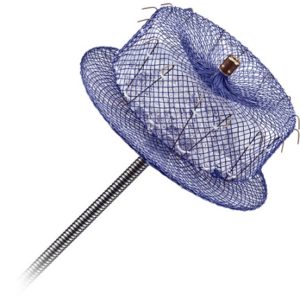
Intracardiac echocardiograpy (ICE) facilitates a high success implant rate of the Amplatzer Amulet left atrial appendage (LAA) occluder (St Jude Medical/Abbott) as well as a high LAA closure rate to prevent thromboembolism in non-valvular atrial fibrillation (AF), according to data from a sub-analysis of the AMPLATZER Amulet Observational study. Device or procedure-related serious adverse event rate was low.
Boris Schmidt (Cardioangiologisches Centrum Bethanien, Frankfurt am Main, Germany) presented the results of this sub-analysis at a late-breaking clinical trial session at the AF Symposium (12‒14 January, Orlando, USA).
This sub-analysis, Schmidt told delegates, was aimed to compare transesophageal echocardiography (TEE) to ICE in Amplatzer Amulet LAA occluder implants in terms of use, serious adverse events and LAA closure.
Schmidt noted that the implanters in the study used either ICE or TEE during the implant procedure at their discretion. In the AMPLATZER Amulet Observational study, a total of 1,088 patients (75±8.5 years of age, 35.5% female) were enrolled between June 2015 and September 2016 at 61 clinical sites in Europe, Middle East, Asia, Australia and South America. The procedure was guided by TEE in 958 patients (88.4%), by ICE in 126 (11.6%) and four are unknown. Nearly 83% of patients were contraindicated to oral anticoagulation and 64.9% had a CHA2DS2-VASc score of ≥4 (Read here the latest results from the AMPLATZER Amulet Observational study)
Schmidt reported a 99.2% implant success rate of the Amulet Amplatzer occluder with ICE and 98.4% with TEE. The LAA closure rate at implant was 100% with ICE and 99.8% with TEE. At three months, the LAA remained closed in 100% of patients in the ICE group and in 98.8% of the patients in the TEE group.

The rate of device or procedure-related serious adverse events within seven days of implant was 3.8% (ICE patients=3.2%, TEE patients=3.9%). The overall 30-day mortality rate was 0.4%, two of the deaths were device or procedure-related. None of these deaths occurred in the ICE group. Cardiac perforation and cardiorespiratory arrest were the causes of the deaths.
Regarding serious adverse device effects including perforation, pericardial effusion, cardiac tamponade, embolisation, thrombus on device, stroke and vascular complications, 3.2% were adjudicated to the ICE group and 3.9% to the TEE group.
In conclusion, Schmidt said, “use of ICE for implant procedure of the Amplatzer Amulet LAA occluder is a viable option with a high success rate as well as a high LAA closure rate. The device or procedure-related serious adverse event rate is low, giving patients with non-valvular AF an additional option for stroke prevention.“
Regarding the relevance of studying the use of ICE in Amplatzer Amulet implant procedures, Schmidt told Cardiac Rhythm News that the use of ICE “may help to reduce the utilisation of human resources since an additional echocardiography is no longer required.”
“The implanting physician can do both, implant the device and handle the ICE probe,” he added.
The Amplatzer Amulet LAA occluder is CE mark approved, but remains an investigational device in USA.









